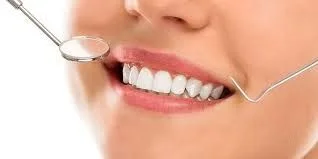Periodontal scaling and root planing is the most common and conservative form of treatment for periodontal disease. This technique allows dental professionals to clean between teeth and gums, all the way down to the roots, and is the most effective way to treat periodontal disease before it becomes severe.
Bacteria causes periodontal disease. Plaque is a sticky substance, full of bacteria, that forms on teeth. When plaque hardens over time, it is called calculus. Plaque and calculus provide irregular surfaces that allow these bacteria to attach easily. Scaling and root planing removes the plaque and calculus. Plaque is more likely to stick to rough surfaces. For this reason, the root surface is made smooth in a process called root planing. Root planing removes any remaining calculus and smoothes irregular areas of the root surface.
For early stages of the disease, this treatment may be all that is needed to get the condition under control. With more advanced gum disease, scaling and root planing may be the first step before dental implants or surgery. 
The Procedure
Scaling and root planing is done with a combination of ultrasonic scalers and hand instruments. Ultrasonic instruments have two components:
- A relatively dull metal tip that vibrates at a very high frequency and “knocks” plaque and calculus off the tooth
- A water irrigation system that cools the tip and helps to flush out debris from around the teeth
Hand instruments are not powered. They have cutting edges that your dentist or hygienist uses to chip away plaque and calculus. These instruments come in various shapes and sizes. Distinct instruments are used for different teeth, and even for different surfaces of the same tooth.
Typically, ultrasonic instruments are used first to remove large deposits of plaque and calculus from the crowns and roots of the teeth. Hand instruments called scalers and curettes are then used to remove any remaining material and make sure that the tooth surface is clean and smooth. When working under the gum line, your hygienist cannot see the plaque or calculus, instead relying on the sense of touch to feel for roughness on the root surface.
It’s vital to practice good dental hygiene after this procedure to prevent any further progression of gum disease. Brush thoroughly after each meal and floss once a day to get rid of the bacteria that form plaque. Visit your dentist regularly to keep your teeth as healthy as possible.
